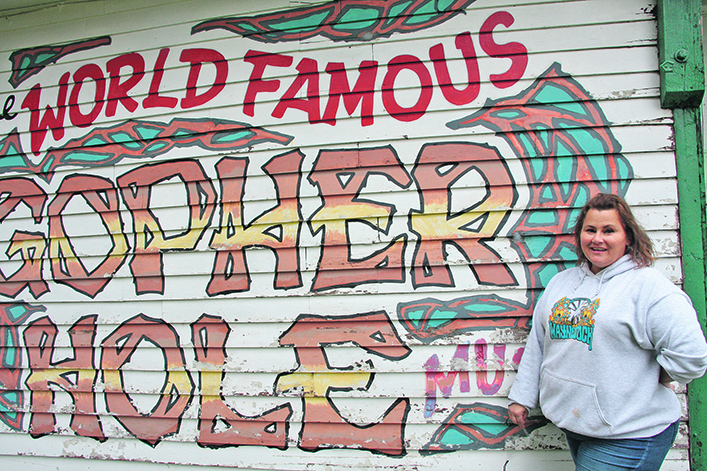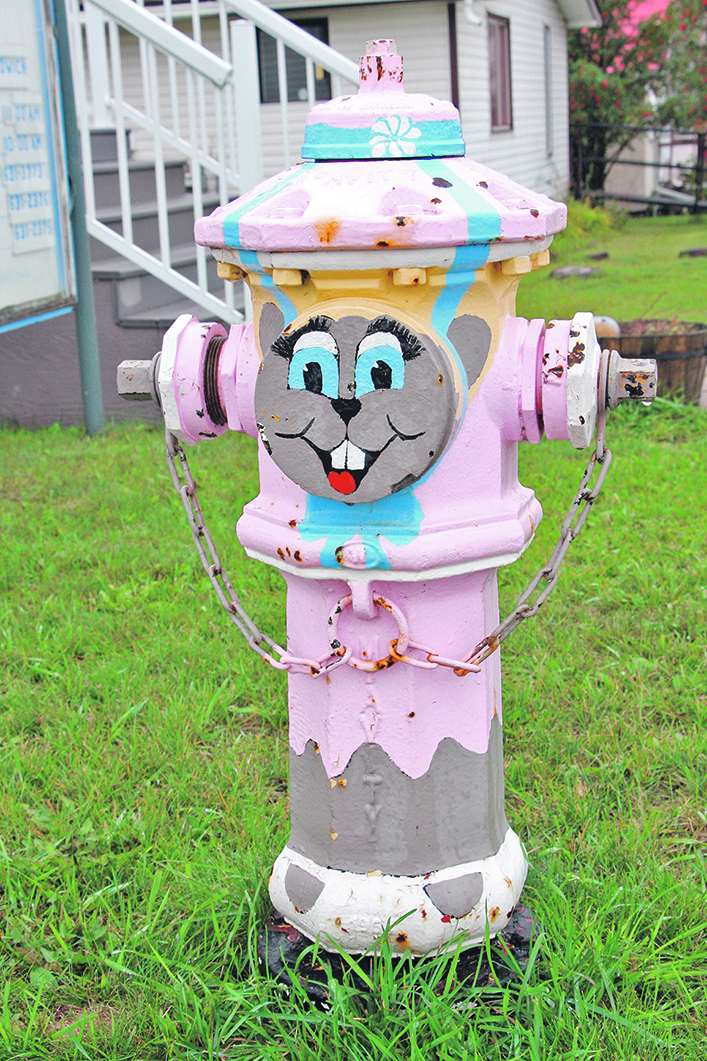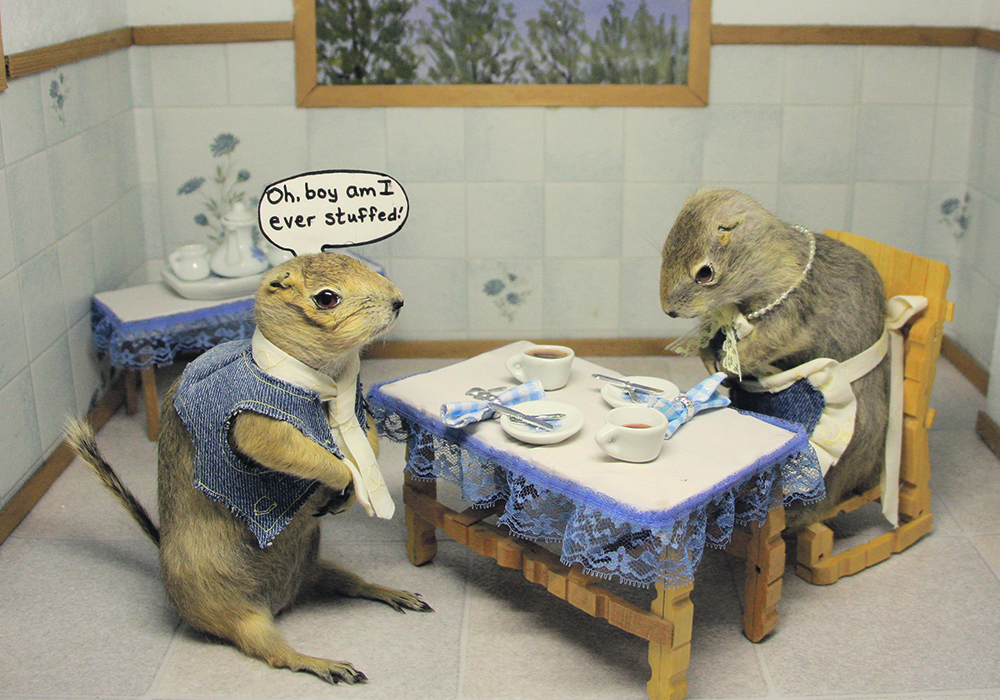Some residents learned taxidermy, others made costumes and the World Famous Gopher Hole Museum came into being
It began 27 years ago when the town of Torrington, Alta., appeared to be dying. The small community, like many other rural communities in Alberta, had lost its four elevators and railway, its school and several businesses.
The future looked grim. Several unsuccessful town hall meetings were held to try and figure out what to do to save the community, which was established in 1929 when the Canadian Pacific Railway came to the site that later became the town.
Early settlers to the area came from the northern United States, Germany, England, France and Saskatchewan. There was excellent hunting for grouse, wild turkey and other game birds along the rail line.
According to Tim Lasutia, Torrington’s historian, the community might have been named after Torrington, England, which is a word that describes a lovely hill. The other possibility is the town was named after lord Viscount Torrington, whose relatives visited the area on two occasions.
Two grain elevators and a blacksmith shop were built in 1929. More businesses sprang up and a chamber of commerce was established in 1931.
After most of the businesses and school closed, tourism seemed like the only option to keep Torrington alive.
Building tourism was a problem because the town had a severe gopher problem. Finally, one frustrated person jokingly said that they might as well just stuff them then, and that is how the World Famous Gopher Hole Museum was born.
“We were able to receive a $9,000 grant and the village gave us the old one-room schoolhouse and we moved another small office building from one of the elevator sites and joined them together to create our museum,” said Laural Kurta, the museum curator.
Five people in the community learned to do taxidermy, while others made the costumes for the gopher characters.

The museum consists of about 50 small three-dimensional displays featuring 75 gophers, or Richardson’s ground squirrels, all dressed up as characters to depict various activities and events that happen in Torrington like curling, fishing and playing cards.
“The display cases look like the old box televisions sets of the 1950s and ’60s,” said Kurta. “Except the TV parts have been replaced by the miniature scenes featuring the gophers.”
“We were looking for something different to attract people to our town and the gopher museum has been very successful over the years. We actually get from 5,000 to 10,000 people a year visiting our museum and these people have come from all over the world.
“We were especially busy during COVID as people were looking for something to do and we were able to set things up so visitors could come to the museum under COVID restrictions,” said Kurta. “We even had a couple come here as part of their honeymoon this year.”
Once a person has finished touring the museum, they can go on a fire hydrant hunt tour of the town to find 12 gopher-character painted fire hydrants.

All the fire hydrant characters are named after real people from the community and have a story behind them. There is “Butch,” who worked on a cruise ship and married Mabel, the town’s schoolteacher, and Peggy Sue is found outside the Lutheran Church dressed in her Sunday best.
Kurta’s mother was the museum’s curator for years after it first opened in 1996. Her father learned taxidermy and created some of the scenes. Now Kurta and her daughter, McKinna, look after the museum, along with a few friends.
“The community isn’t the same as when I grew up here” said Kurta. “When I was young, everybody knew everyone and there was lots of social activities in town. Now most people who live here didn’t grow up in the community, don’t know their neighbours and they go to work elsewhere. Our school is gone along with many businesses, banks, post office and general store. Our museum is the main drawing card for our community”















